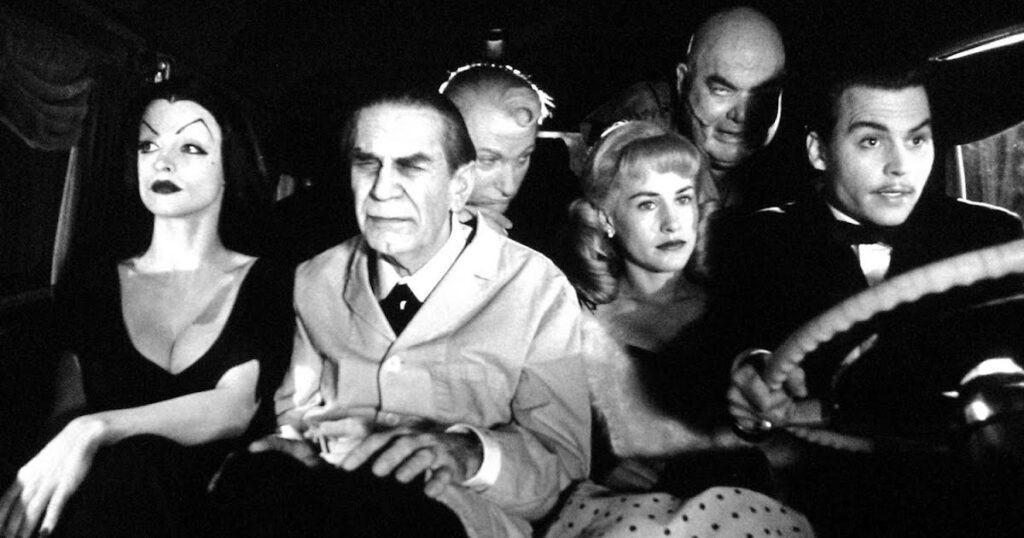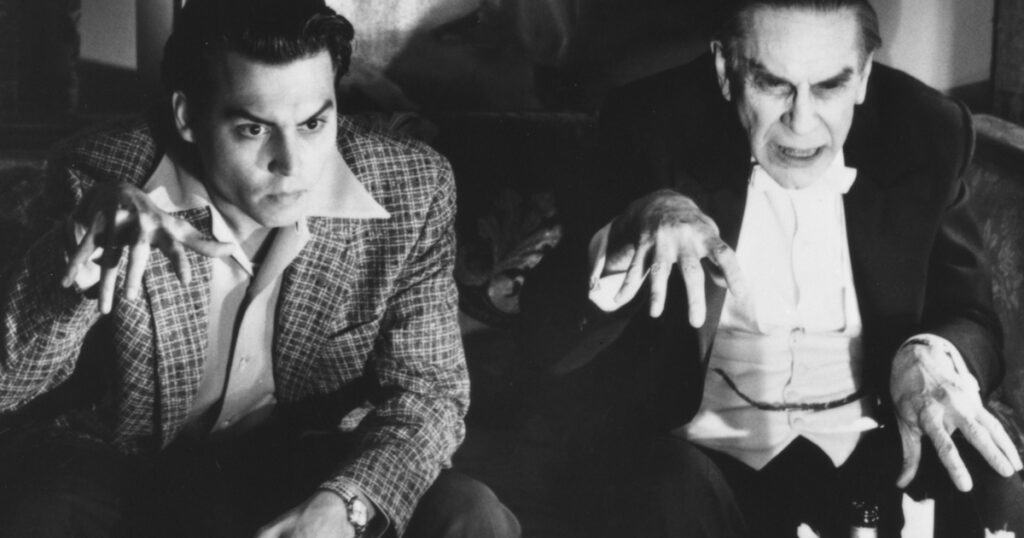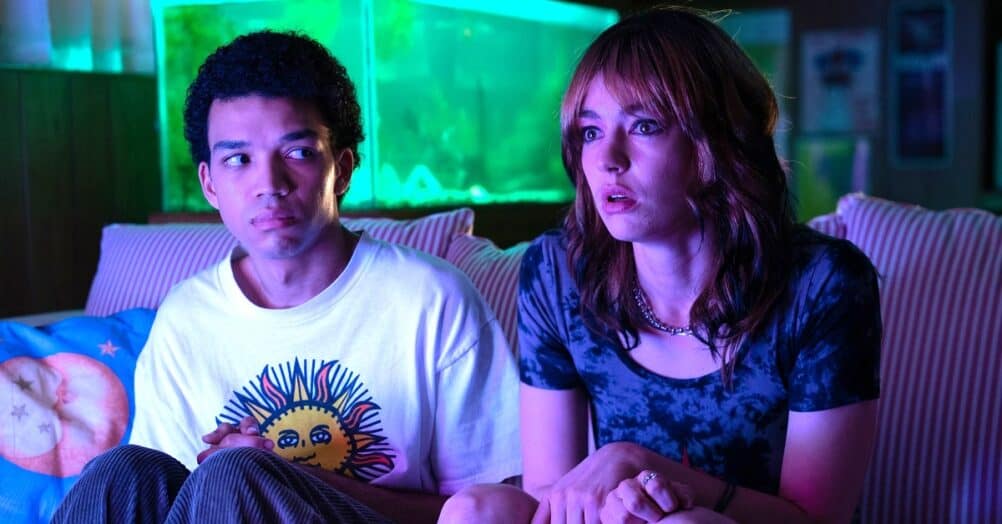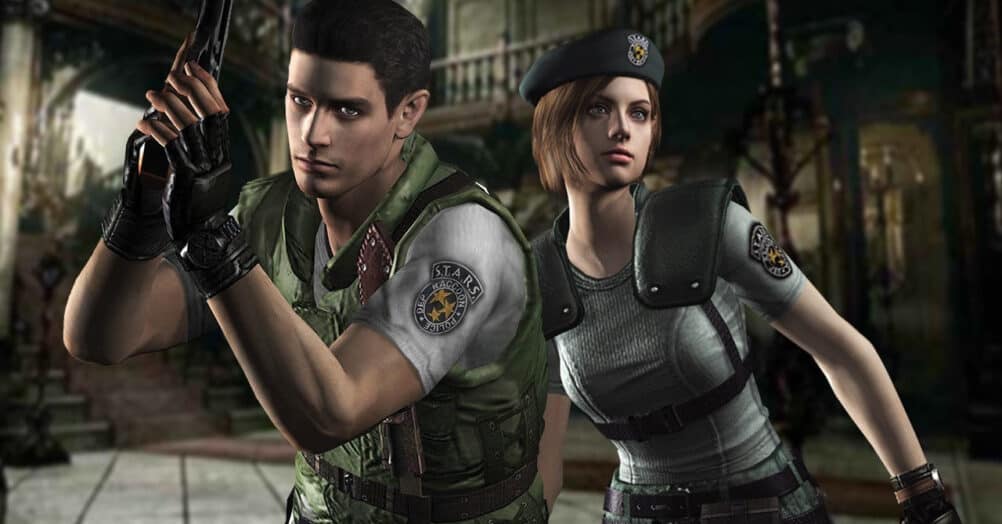Last Updated on November 3, 2023
Chances are, if you’re familiar with the name Edward D. Wood, Jr., it’s thanks to Tim Burton’s delightful biopic, Ed Wood. Certainly, people were aware of the eccentric writer-director prior to the 1994 film, but Burton cast Wood in a whole new light, turning the quote-unquote “worst director of all time” into a lovable dreamer who wouldn’t let puny budgets, bad actors, or obnoxious producers impede his goals. Ed Wood gave us a reason to appreciate a man for whom making movies was the ultimate gratification, quality be damned. Settle into your favorite angora sweater, because we’re going to find out What Really Happened to Ed Wood.
To start off with the obvious, Wood’s real life wasn’t quite as peachy keen as the movie portrays. Tim Burton didn’t want to make a traditional biopic about the man, nor did the screenwriters, who based some of their script on the book “Nightmare of Ecstasy: The Life and Art of Edward D. Wood, Jr.” The book told the story of Wood through interviews with past friends and colleagues, and, along with letters written by Wood himself, painted a picture of a man who loved cinema, and wanted to be a part of the business.
One of the main thrusts of the film’s narrative is Wood’s friendship with an aging, drug addicted Bela Lugosi, which was indeed based in reality. Wood idolized the Hungarian actor best known for playing Dracula, and while their friendship was real, Wood also saw an opportunity to capitalize – if only a little – on whatever recognition Lugosi’s name still carried. Sadly, Lugosi was almost hopelessly addicted to morphine at the time, and as depicted in the film, he was the first famous actor to check himself into rehab due to drug addiction. Lugosi actually saw it as an opportunity to gain some free P.R., and welcomed reporters to take pictures of him in his room.
Not so factual, according to Lugosi’s son, was the film’s depiction of his father as constantly cursing up a storm – apparently, Bela never dropped any F-bombs. Nor was he so resentful of Boris Karloff as shown in Ed Wood, in which he’s often putting down his fellow Universal Horror actor. It would seem as though in real life Lugosi had great respect for Karloff.

Of course, Wood’s most famous, or infamous, eccentricity was his love of wearing women’s clothing, something remarked upon quite often in Burton’s film. This is indeed true: he would wear women’s underwear even during his service in the war, as well as while on set directing his pictures. While this wasn’t a deal-breaker for two of his wives, a third woman he married broke up with him because of this habit – though this chapter in Ed’s life is not dramatized in the film.
Some have objected to the movie’s depiction of Dolores Fuller, Wood’s first wife. As played by Sarah Jessica Parker, Fuller is seen as argumentative and bitter, especially after Wood decides not to cast her in the lead in Bride of the Monster. But in later years, it’s been said Fuller was as supportive as could be under the strange circumstances of living with Wood, and it was his alcoholism that finally caused her to split. Fuller herself chimed in on it in an interview after Ed Wood‘s release, saying that while she enjoyed the movie, she didn’t appreciate Parker’s portrayal of her. Shown in a far more forgiving light is Kathy O’Hara, played by Patricia Arquette, Wood’s third wife. In the film, they meet-cute while Wood sits in a waiting room while Bela Lugosi recovers from his addiction, but this never happened – in fact, they apparently met in a bar one night while Wood was out drinking with Lugosi. The story goes that when the real Kathy O’Hara visited the set of Ed Wood and got a look at Johnny Depp, looking disheveled in his ladies’ garments, she said, “He looks just like Eddie.”
One of Ed Wood’s most beloved scenes details how, during the making of Bride of the Monster, Wood and his ragtag crew stole a mechanical octopus from a studio, dumped it into a freezing pond in Griffith Park, and proceeded to have a drunken Lugosi wrestle with it because they forgot to steal the motor that runs it. Terrific scene, but not necessarily one based in reality. Some dispute the notion that they’d stolen the octopus at all, the claim being Wood simply rented it. Furthermore, it’s been said it was a stuntman named Eddie Parker who wrestled with the rubber beast in the water, and not Lugosi. Indeed, when you watch the actual scene it’s difficult to tell who it is in the water, though it’s not hard to think a stuntman would have made more sense instead of a 70-year-old Lugosi.

Another very memorable sequence involves Wood and his company getting baptized – which did happen. Wood‘s magnum opus, Plan 9 From Outer Space, was financed by the First Baptist Church of Beverly Hills, and Wood – ever the wheeler and dealer – agreed to be baptized before shooting commenced if that meant securing the funding.
While Plan 9 was one of Bela Lugosi’s final films, he had passed away before shooting commenced – Wood ended up using footage he’d already shot with the legendary actor in the picture. To bring Lugosi back to life, so to speak, Wood enlisted chiropractor Tom Mason to stand-in for the deceased man, by none too subtly hiding most of his face with a cape.
While Tim Burton’s movie omits the darker periods of Wood’s life, which include a further descent into alcoholism and a very early death at the age of 54, his film pretty accurately depicts the rocky, do-it-yourself nature of being on an Ed Wood set, as well as the director’s ceaseless optimism during his better days. And let’s face it, whether it’s been made with rose-colored glasses or not, it’s still an excellent picture – Eddie surely would have approved.




















Follow the JOBLO MOVIE NETWORK
Follow us on YOUTUBE
Follow ARROW IN THE HEAD
Follow AITH on YOUTUBE